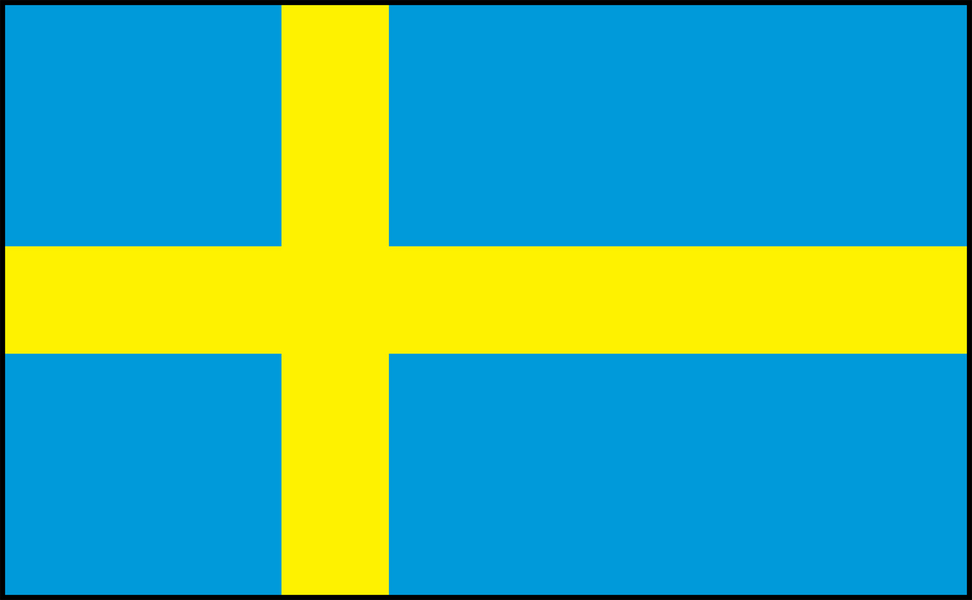Interesting Sweden Facts
Sweden is a coastal country located in Northern Europe where it is bordered by Finland, Norway and the Baltic Sea. It occupies 450,295 km2 of land. The total population of Sweden is somewhere in the region of 9,910,701.
Check out interesting Sweden facts and information about this European country with our fact file for kids. Explore important facts about the location, currency, flag, continent, language, population, size, climate, people, geography, landscape, landmarks and culture of Sweden.
Discover Europe with our interesting Sweden facts for kids based on questions such as: What continent is Sweden in? What is the main language of Sweden? What is Sweden famous for? How big is Sweden? What is the capital city of Sweden?
Sweden Fact File: Continent: Europe * Country Name(s): Sweden, Kingdom of Sweden * Location: Northern Europe * Bordering: Finland, Norway and the Baltic Sea * Capital City: Stockholm * Size: 450,295 km2 * Estimated Population: over 9,910,701 * Currency: Swedish krona (SEK) * Language(s): Swedish * Country Code: +46
Interesting Sweden Facts for Kids
Interesting Facts for Kids 1: Size & location facts
Sweden belongs to the continent of Europe, where it has a coastal position and is bordered by Finland, Norway and the Baltic Sea. Sweden, along with Finland, Norway, Iceland and Denmark, form the Nordic countries. There are seven continents in the world: Asia, Africa, North America, South America, Europe, Antarctica, Australia (Oceania). Europe is the world's second smallest continent, occupying a total area of 10,180,000 km2. Europe has 51 countries, with some countries belonging to both Europe and Asia, and forms 6.8% of the world's landmass. Sweden is a coastal country that stretches over a total area of approximately 450,295 km2. It is the 5th largest country in Europe by area and forms part of Scandinavia together with Norway and Denmark. The three Scandinavian countries, together with Denmark and Iceland, form the Nordic countries.
Interesting Facts for Kids 2: Population facts
The population of this European country is somewhere in the region of 9,910,701 people. The majority of Sweden's inhabitants reside in Stockholm which is the country's most populous city. Sweden has an average to low population when compared to most other countries across the world, its overall population density is approximately 21 people per sq km. The estimated population of Europe is approximately 738,442,000 inhabitants, making it the continent with the second smallest population in the world. The continents in order of population, starting with highest population first, are: Asia, Africa, North America, South America, Europe, Australia (Oceania Region) and Antarctica. The total population of the entire world is in excess of 7.6 billion people.
Interesting Facts for Kids 3: Capital & major cities
Sweden's capital city is called Stockholm. The names of other major cities situated in this country are Gothenburg, Malmo, Uppsala, Sollentuna and Västerås.
Interesting Facts for Kids 4: Country borders
The following guideline provides details on the approximate border lengths of Sweden:
Coastline 3,218 km, Finland 545 km, Norway 1,666 km.
Interesting Facts for Kids 5: Climate and geography facts
Sweden experiences varying climatic conditions across its regions. In the far north, the conditions are subarctic, where as southern regions receive a more temperate climate with overcast, cold winters and cool summers. The geography of Sweden is composed of flatland and lowlands, mountainous regions, and thousands of lakes. Sweden has nearly 100,000 lakes with the largest being Lake Vanern. lowest point: reclaimed bay of Lake Hammarsjon, near Kristianstad -2.4m highest point: Kebnekaise 2,111m
Interesting Facts for Kids 6: Natural Resources of Sweden
Natural resources can be defined as materials and substances that occur naturally on Earth. Natural resources are very important across the world, and can be exploited for economic gain. The level of natural resources present in an individual country depends on varying factors which are influenced by the geography, climate and location of that country. Some countries, such as Russia, The United States, Saudi Arabia and Canada, have many natural resources, where as some other countries have limited to none. Food, construction and transport are three primary examples of uses of natural resources. The following information provides examples of these uses: fish occurs naturally in streams, rivers, lakes and oceans, and can be caught for food consumption. Wood/timber can be extracted from forests for construction purposes, i.e. to build homes and furniture. Crude oils can be refined into different kinds of fuels in order to power vehicles/cars. The natural resources found in Sweden include iron ore, copper, zinc, lead, silver, gold, tungsten, uranium, arsenic, feldspar, timber and hydropower (water power).
Interesting Facts for Kids 7: Language facts
The official language of Sweden is Swedish, which is spoken by the overwhelming majority of the population.
Interesting Facts for Kids 8: Religion facts
The main religion of Sweden is Church of Sweden at approximately 63% of the population. The rest of the population either belongs to other religions or no religion at all.
Interesting Facts for Kids 9: Symbols of Sweden
Every country has its own unique culture, history and identity. Flags, symbols, emblems, mottos, songs, anthems and colors are used by countries across the world to represent national pride and identity. These national symbols are forged through a nation's unique history and can represent both hardship and prosperity, embodying freedom, strength and unity. Flags, emblems, songs, mottos and colors reflect the past, present and future hopes of a country, and create an important image to the rest of the world. National symbols can include a mixture of things that are symbolic to a country such as animals, birds, flowers, trees, geographical features, tools of agriculture, crops, and tools of war. The following facts and information provide a guide to some of the most important national symbols, songs and colors of Sweden:
National symbol(s): three crowns, lion
National colors: blue and yellow
National Anthem/Song: Du Gamla, Du Fria (Translation: Thou Ancient, Thou Free)
National Holiday(s): National Day, 6 June (1983)
